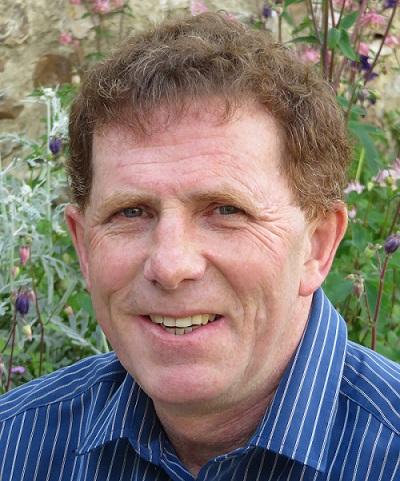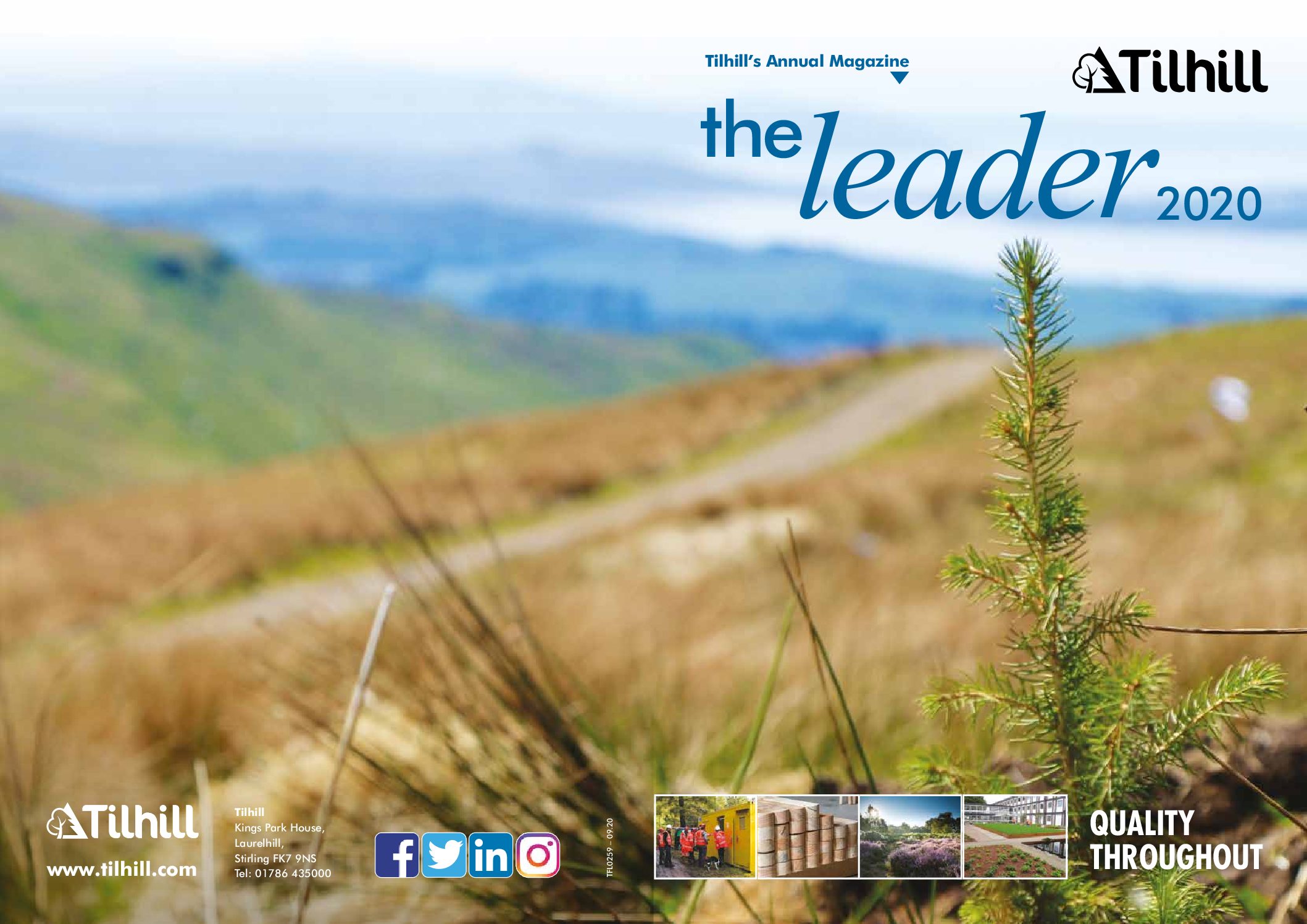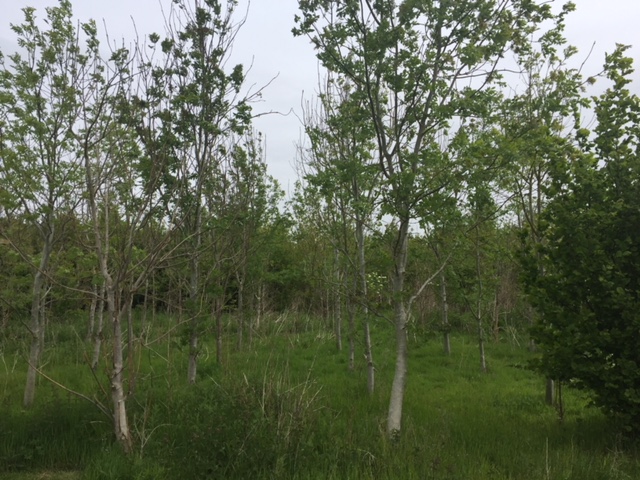This website uses cookies so that we can provide you with the best user experience possible. Cookie information is stored in your browser and performs functions such as recognising you when you return to our website and helping our team to understand which sections of the website you find most interesting and useful.
by Julian Ohlsen, Tilhill's Southern England Regional Manager

Julian Ohlsen
Find out moreMuch has been written on the impact of Ash dieback disease (Hymenoscyphus fraxineus) since it was first found in the UK in 2012 in the northeast corner of East Anglia.
In the 8 years since then there has been significant research, conjecture, assumption and, alas, death of many magnificent and economically important stands of ash trees.
The spread of the disease has been quicker than initially estimated. Much of this is down to the wet, warm and windy early autumns we regularly experience.
We now have a better understanding of how the disease acts. Once a tree is infected, the leaves that fall to the ground each autumn hold the key to its spread. The compound leaf structure has a central stalk or ‘rachis’, to give it the correct biological name. The fungus grows on the rachises in the form of tiny yellow/white fruiting bodies. Over the course of the winter and spring these then mature and expel spores into the air, the summer after the leaves fell.
The first ash they come into contact with will become infected. The spores settle onto leaves or bark and are then taken into the trees xylem before the disease works its way back into the main stem through dying and embrittled twigs and branches.
Stands or groups of pure ash of around 25 years old have been found to exhibit almost stand collapse with virtually all trees being infected and suffering irreversible crown death. This must be due to the lack of dense vegetation below the pure interlocking ash canopy only some 8 to 10 metres above. We have seen devastating infection on several new woodland sites planted between 1998 and 2006. Here ash was a strong component due to its vigorous early growth, straight form, timber qualities and resistance to squirrel damage. Today, the race is on to harvest these stands before the stems dry out so much that when chipped, they disintegrate and turn to dust rather than good dry wood chips.
In many cases, the stand condition is so poor that complete removal is required and a replacement crop replanted in its place. In other stands we regularly thin out the diseased trees to provide more air flow and sunlight to the crowns of more tolerant trees. Thus far we have to keep returning, monitoring and thinning ever more it seems.
In direct contrast to the plantation stand collapse, open grown hedgerow trees show a wider range of impact to the disease. More open crowns, direct sunlight, greater air movement and lack of competition may all contribute to a tree’s ability to periodically recover from partial die back. Despite this, the trees never recover fully and the damage caused continues to weaken trees which can lead to a limb being shed or enabling a more damaging infection to gain entry, such as honey fungus.
Research has now turned to look for any naturally occurring tolerance to the disease that may exist in the wider population of genetically isolated ash across the UK and northern Europe. Forest Research planted 155,000 young transplants from seed collected early into the spread of the disease. Now, five years later, they have 575 trees that remain free of symptoms. Cuttings and grafts are underway to begin establishing a seed orchard for future large scale production. This will only work if the tolerance is genetically inherited and this is where the most recent research is focused.
Tilhill, each year supports Future Trees Trust, a charity dedicated to the improvement of broadleaved trees and a key partner with Forest Research, Earth Trust, Kew and FERA Science on The Living Ash Project funded by DEFRA to establish new genetic trials to investigate the variation and heritability of ash tolerance to determine the scope for breeding our way out of the Chalara problem and to develop tissue culture techniques which will enable rapid production of large numbers of tolerant ash plants for planting.
The UK Forest Research team are joining a group of universities, agricultural facilities, and European researchers under the name of the Nornex Consortium. Their recent funding of £2.4m will help the work into establishing the genome sequencing of ash and find the key to resistance to dieback.
Several other steps have been taken to help professional managers deal with the issues arising from this disease. The safety aspect being one of the most essential. When felling with a chainsaw, ash trees have always been difficult to predict how they will fall – the timber can be stressed and will split under the pressure of being felled. As the tree dies from the disease the timber reacts with even more unpredictability. The Forestry Industry Safety Accord (FISA) has been very proactive in issuing advice and best practice on how mechanical harvesting should be employed as first choice to remove chainsaw operators being placed at the base of an unpredictable tree. Likewise, climbing dangerous and dying trees for sectional dismantling must be avoided and the use of a mobile platform is essential in tree surgery situations.
The protection of our woodland cover becomes ever more important when such an ecological disaster looms and the Forestry Commission has not bowed to pressure to relax felling licence regulations. Trees can continue to be felled if dead, but if simply diseased, they still require forward planning and licences applied for, the exception being smaller individual trees or garden trees which remain exempt.
To encourage proactive management of the decline in commercial ash stands, grants have been made available to encourage their replacement with a wide range of trees such as lime, hornbeam, sycamore and aspen.
The outlook suggests that ash will remain in our countryside for some time yet, just like the English elm, where you can still find isolated trees in mixed woodland growing away from the attentions of the beetle. From this situation, together with the active research and tree breeding efforts, we will remain able to enjoy some element of Fraxinus excelsior (ash) in our woodlands.
Read more from The Leader 2020:Tilhill’s Annual Magazine:





